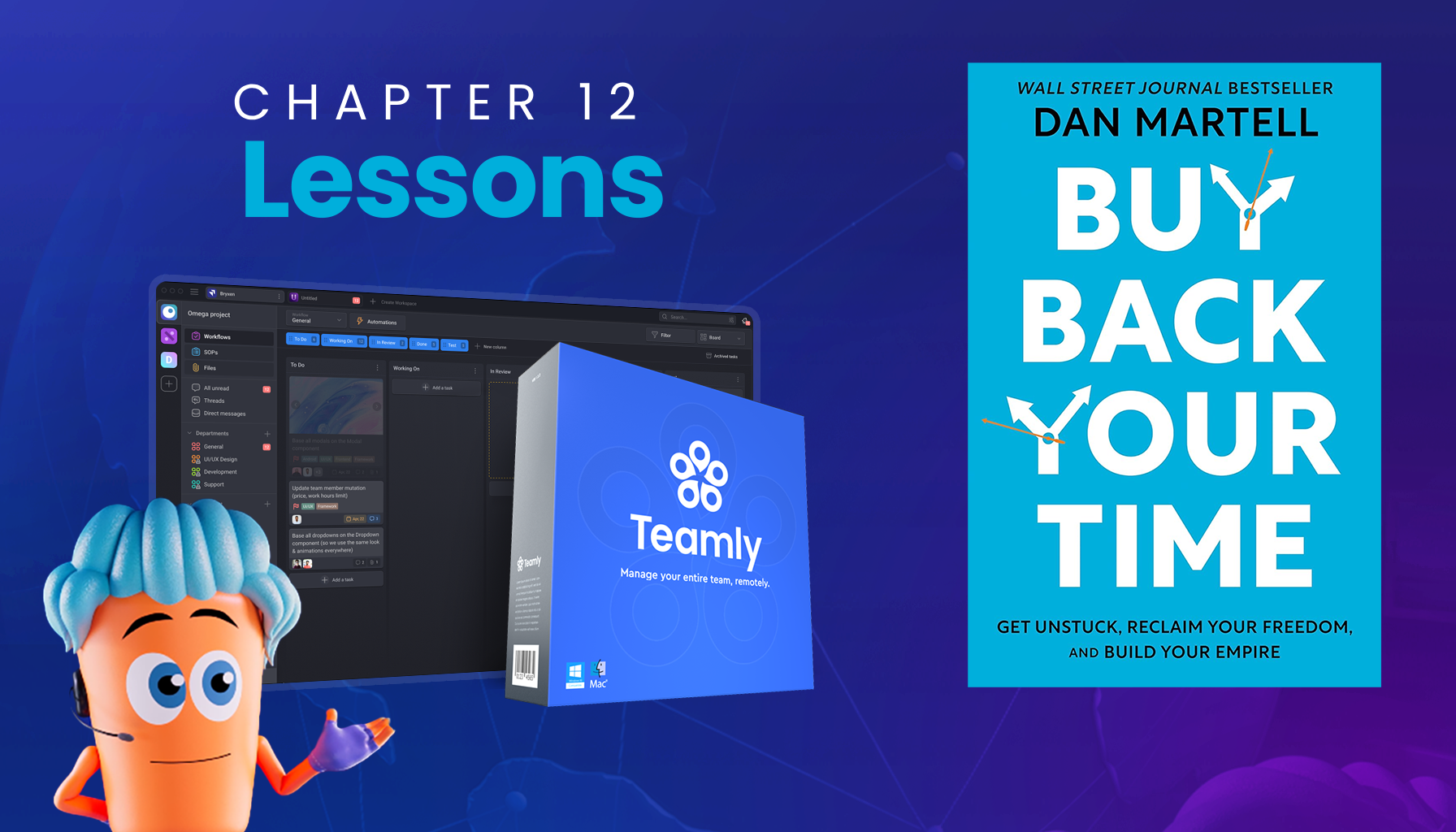
Click the button to start reading
What is a value ladder? A super powerful sales tool, explained.
Anyone who’s worked in sales understands – making the sale is all about building a relationship. And just like any relationship, the best way is to start slowly and build trust over time. That’s where the value ladder comes in.
Want to understand more about value ladder marketing and how you can use the concept in your own small business marketing strategy? Let’s get going.
What is a value ladder, and why does it matter?
Before we get into how to create a value ladder for your business, we’ll start here: what is a value ladder and why does it matter?
What is a value ladder?
A value ladder is a marketing concept that describes how the more a brand invests in a customer relationship and adds value, the more that customer will be willing to spend. It’s a concept that goes hand-in-hand with sales funnels. You start with a no-brainer offer – a free or inexpensive, super valuable lead magnet – to get people into the top of your funnel, then gradually add value and increase the price as they progress further into the funnel.
It’s a concept especially popular with online businesses that sell high-ticket items where the value can’t be immediately understood. For example, a person might inherently understand the value of a car, while the value of a service might take more time and information to assess.
Why does having a value ladder matter?
Most business owners are familiar with the concept of a sales funnel. The value ladder is essential to structure your sales funnel for a lower cost per acquisition, lower-effort sales, and more sustainable customer relationships. Below are some key reasons why having a value ladder matters for your business.
- It creates repeat customers. Getting new customers can be expensive and challenging while selling to repeat customers typically takes less time, effort, and resources. A value ladder pushes business owners to create introductory offers (for new prospective clients) and follow-up offers (for current or past clients) to ensure they meet their customers’ needs at every stage of their lifecycle rather than having to continually source new leads.
- It builds sustainable relationships. With a value ladder, you start by offering value before selling. It’s leading with generosity and giving without expectation of reciprocity. Like in personal relationships, this helps establish the trust needed to ultimately make a customer feel comfortable and understand what you do. In turn, with time, they might be willing to make a more significant investment than they would have been before.
- It diversifies your sources of revenue. A value ladder can contribute to a more diverse business model. Rather than relying on your most expensive offer to generate revenue for your business, a value ladder ensures you create offers for your ideal clients at several different price points. Depending on your business, this might mean you generate most of your revenue with a high volume of low-ticket sales or a low volume of high-ticket sales. This allows you to test what your customers need, and you might find that this is a great way to diversify your income stream and give you a framework for creating future offers.
- It facilitates a more natural approach to selling. Because a value ladder relies on repeated interactions, adding value, and building trust, you don’t have to rely on hard sales tactics or follow-ups. It’s a process that can often be standardized and automated once you deeply understand what your customers want and need. This is a more natural way of selling for many businesses, and it can ultimately lead to healthier, more trusting, more loyal relationships with your customers.
A Value Ladder Example
Executive coaching makes for an excellent example of a value ladder’s usefulness. Since the value of an executive coach relies heavily on the coach’s experience, nature, and compatibility, it’s unlikely that a person would invest in high-ticket coaching without some existing knowledge or relationship. Here’s an example of how an executive coach might use a value ladder to facilitate the sale.
Let’s say a mid-level manager (the customer) is looking for an executive coach (the coach) to help them reach the next level in their career. In this case, the customer learns about the coach through an ad on LinkedIn.
They click through to the coach’s website and find that they offer a free webinar – 3 Mistakes Every Manager Makes that Keep Them from Promotion. The customer then gives the coach their email for access to the webinar. This is the entry point of the sales funnel and the lowest rung in the value ladder.
A few days later, the coach might send an automated follow-up email that asks the customer how they found the webinar and invites them to sign up for an online, self-paced workshop that costs around $300. If the customer found the webinar useful, they might be interested in taking a course with this coach to learn more about their methods in an affordable and low-risk way.
At this point, the customer will either progress up the value ladder – purchasing the course – or stay at the lowest rung – not buying the course. If they don’t purchase the course, the coach might try to follow up with them again with a better offer or send them another offer at an equal or lesser price before they exit the sales funnel.
For the customers that purchase the course, this is the coach’s opportunity to prove their expertise and value. When the content is excellent, the customer will wonder how much further they could get with a more tailored offer. And if the coach has a great value ladder, they’ll have a service to address that! Perhaps the next rung of the value ladder is a group coaching program or one-on-one coaching. The coach should make it clear and available to the customer throughout the course, especially at the end, how they can take the next step in working together.
As you can see from this value ladder example, the key to a great value ladder is to increase the price only after you have proven value and clearly define the differences in value at each rung. Rather than leading with a high-ticket item, the goal is to create a solid foundation in which the value of your offer comes through with lower risk. You increase the price only once the relationship is established, but you should deliver additional value at every step of the process.

Value Ladder, Explained
- Lowest rung – your free or low-ticket offer. Most often, the first step of the value ladder is a free offer, freebie, or lead magnet that incentivizes people to give their contact information in exchange for something of value. This can be anything from a free webinar to a workbook to an audit where the customer has to give an email to view their results. Rather than trying to sell to potential customers, the focus at this stage of the funnel is just to be able to follow up with them again rather than to make a sale – you’ll be able to offer paid products in future communications. The key to your freebie is that it’s extremely valuable to your target audience but requires little time and energy to deliver. People should ideally be able to sign up and access the content without additional work on your part.
- Second rung – paid offer with low barrier. Once you’ve collected their contact information with your free offer, it’s time to introduce your first paid offer. The second rung of the value ladder allows you to continue delivering value with a low barrier to purchase. There’s no exact figure as to how much the offer at this rung should cost, but it should be set at a price point that’s relatively accessible when compared to your big offer. This might be a book, an online course, etc. Like the lowest rung offer, your second rung offer should be largely digitized and low touch so you can focus your energy on the higher rung clients.
- Third and fourth rung – progressively increasing value offers. After building trust with your freebie and low-ticket offer, you can start introducing offers of greater value. This could be a group coaching program, access to a membership community, or a more premium product. Your real-time involvement increases at this stage, but the price can justify this. At the same time, it might be a group offer or something that’s not completely tailored to convince customers of the value of your high-ticket offer.
- Fifth rung – the high-ticket offer. At the top of your value ladder is your highest-ticket offer. This could be anything from a service to individualized coaching. And only once you’ve built the relationship will your ideal client realistically consider this offer. Even if only a tiny percentage of people who download your freebie ever make it to this stage of your funnel, you’ve likely maximized the number of leads who get to this point and also generated revenue by making smaller sales along the way. Since this is your highest-ticket offer, there’s a lot of value for you in investing more time and energy into these leads. You also might consider creating a follow-up offer for these customers so that they can keep working with you after the initial engagement.

How to create a value ladder
Alright – now that you clearly understand what a value ladder is and how it can be implemented, let’s walk through the steps of creating a value ladder for your business.
- Understand your target audience. Like all things in marketing, the first step is deeply understanding your ideal client. What do they care about? What are their frustrations? What would they like most? Once you know who they are, you’ll be able to market to them more directly and create offers they want.
- List out all your current offers. Before you create your value ladder, it’s essential to understand what offers you already have and what you still need to develop to implement it successfully. Rank each offer based on price and value to determine the order in which you will introduce them to customers.
- Adapt and create new offers. Based on your list of offers, you might have to spend some time adapting old offers and creating new ones to ensure customers have a smooth path to purchase. This is also the stage where you might consider adjusting the cost or content to avoid redundancies and help customers move through your funnel more seamlessly.
- Implement the necessary systems to deliver your value ladder. The best way to roll out a robust sales funnel is to make it as low-touch and automated as possible. At this stage, consider where you will host your content and how your clients will access it as they reach every step of your funnel. For example, if a customer opts into your funnel with a free checklist, will they download it directly on your website or receive an email with the link? You’ll also want to use an email program to automate user journeys, considering how much time should pass between each follow-up. If your first piece of content is simple, it might only take a couple of days, while something more time-consuming might require more time before follow-up. The important thing for effective selling is that your automations are well thought through and tailored based on customer action.
- Start testing. Once you’ve had your first few customers climb your value ladder, you’ll see where people are converting, dropping off, and how customers are interacting with your content in general. Make sure you go through the process yourself or ask friends or employees to do it! This data will be invaluable as you improve your value ladder with time and automate more of your business.
- Let it run and update. When you’re confident that your value ladder is working for your business, you’ll sit back and watch your hard work pay off. That said, it’s important to schedule regular check-ins – every few months is a good place to start – where you review the automations and content and ensure everything is working as it should. The pace of information is faster than it’s ever been, and to stay relevant, you’ll want to be diligent in ensuring that everything you produce is up-to-date and accurate. The more outdated the information, the more likely your content won’t convert or establish the necessary trust.
- Scale. Once you see your value ladder working, you’ll also be able scale it. This might mean running more outbound marketing campaigns or expanding into new verticals to get more people into the top of your sales funnel and, therefore, more conversions at the end.
- Repeat. Of course, the best part of all of this is that once you have a structure for a value ladder, you can easily replicate it. There’s no limit to what you can do when you have a system that works for your business!
Concluding thoughts on the Value Ladder
At its core, a value ladder just taps into well-known sales principles. Principles like understanding your ideal client. Creating the resources they want. Leading with adding value without expecting something in return. Building a relationship on a foundation of trust. Staying consistent and developing trust so your customers are more willing to enter a business relationship.
With the support of a sales funnel, a value ladder can be a powerful engine for any small business. You don’t have to start with a complicated funnel with multiple levels! Instead, start simple, using content and tools you already have, and go from there.
















